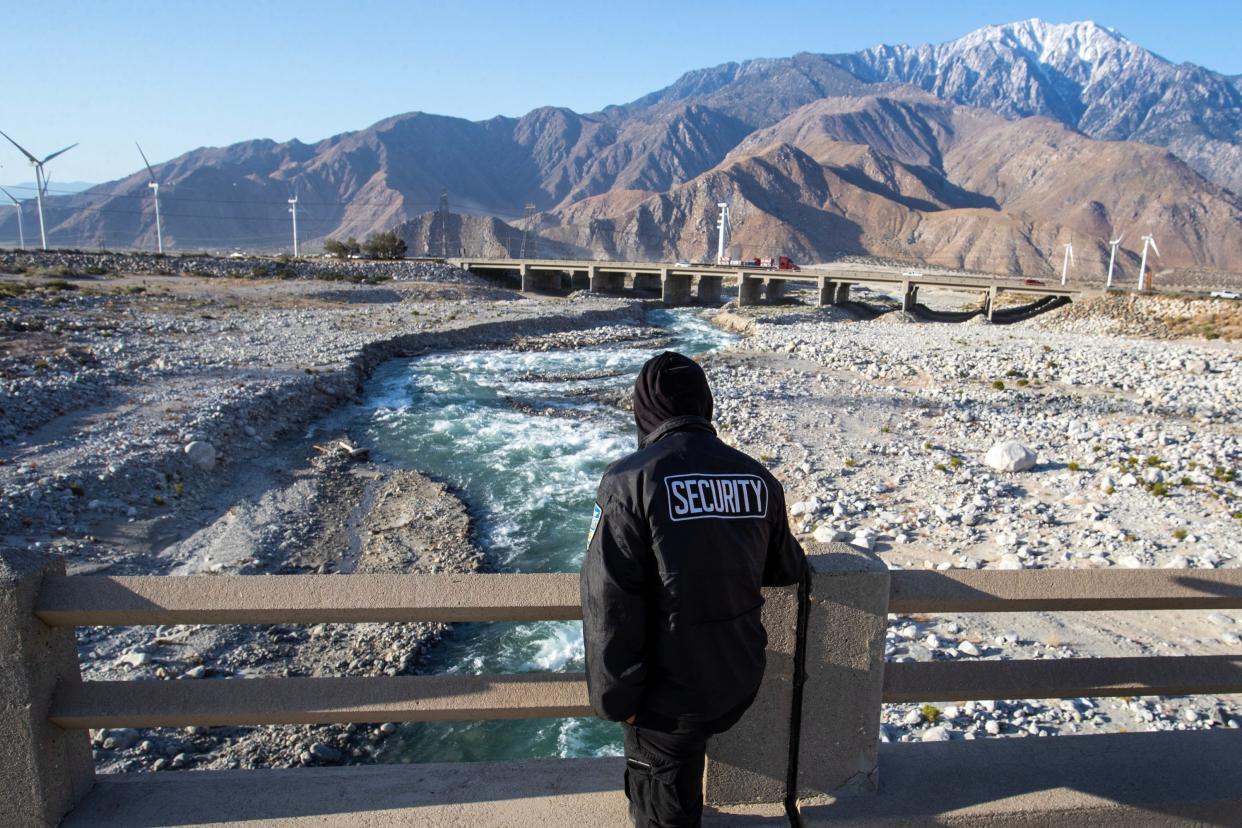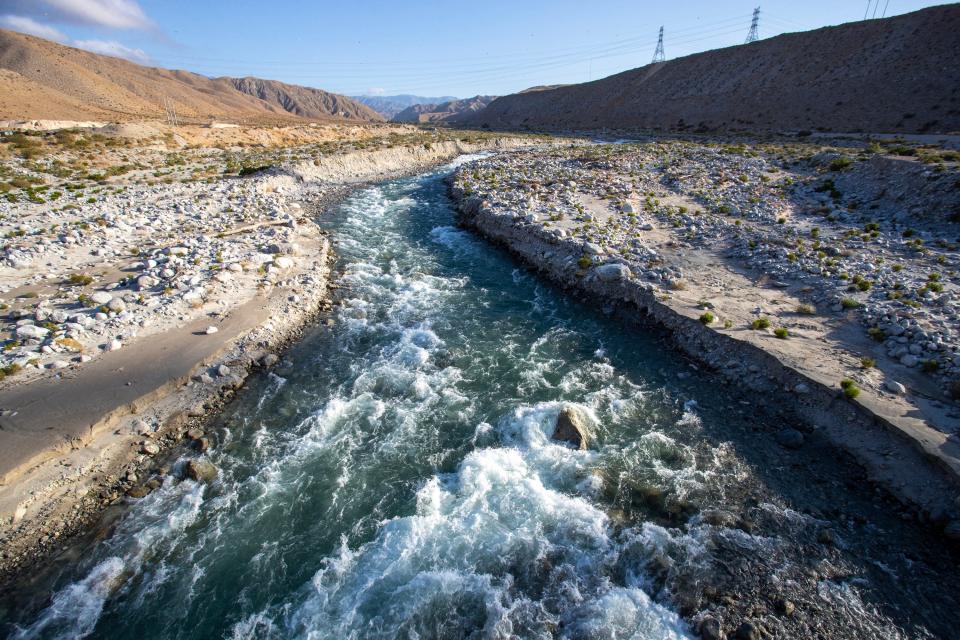Why is there so much water in the Whitewater River channel right now?

A lot of water is flowing quickly through the Whitewater River right now ― and while the cause is partially the state’s historic snowpack, it’s a bit more complicated than just extra snowmelt runoff.
Local water agencies received 100% of State Water Project allocation
For the first time since 2006, Desert Water Agency and Coachella Valley Water District are receiving their full 100% allocation of water deliveries from the State Water Project this year, a total of 194,100 acre-feet. An acre-foot of water, or 326,000 gallons, is enough to supply one to two California households for a year.
In the past two years of severe drought, the water agencies were only getting about 5% of that allocation, according to CVWD spokesperson Lorraine Garcia.
The state’s Department of Water Resources announced in late April that it would deliver 100% of water supply allocations to each of the State Water Project’s 29 public water agencies for the first time in 17 years following a historically wet winter. The announcement came as reservoirs were nearing capacity and snowmelt was starting to runoff from the state’s mountain ranges.
The State Water Project is a water storage and delivery system extending more than 705 miles, delivering water from Northern to Southern California through a series of canals, pipelines, and reservoirs.
Coachella Valley's water comes from the Colorado River
While desert water agencies are receiving their full 194,100 acre-feet of State Water Project water this year, the water they’re receiving actually comes from the Colorado River Aqueduct. Because the State Water Project’s pipelines don’t reach the Coachella Valley, CVWD and DWA exchange their State Water Project water with the Metropolitan Water District in Los Angeles for water from MWD’s Colorado River Aqueduct.
That water then flows through the Whitewater River channel past Interstate 10 to the Whitewater River Groundwater Replenishment Facility near Windy Point, where it seeps into the underground aquifer. Nearly all of the drinking water that is used in the Coachella Valley comes out of this aquifer, or groundwater basin.
This “artificial replenishment” of the groundwater basin is necessary because the Coachella Valley’s annual average of 3 inches of rain, along with snowmelt from the surrounding mountains, “is not nearly enough to naturally replenish what is pumped from the local groundwater basin to meet water demands,” according to CVWD.
The Coachella Valley groundwater basin was previously in overdraft for decades, meaning more water was pumped out from the aquifer than was percolated back in through rain and snow melt. In response, DWA and CVWD joined the State Water Project in the late 1960s, and began using their water entitlements to replenish the groundwater basin in 1973.

Whitewater River is moving faster than normal
Due to the increased high and fast water flows, CVWD is reminding residents to avoid the Whitewater River channel near Windy Point on both sides of Interstate 10, stressing that the current flows in the channel “can easily knock a person off their feet and sweep them down the channel leading to injury or death.”
As of early May, the flow rate in the channel is about 525 cubic feet per second, “the equivalent of 525 basketballs moving past a given point every second.” Starting this week, the flow rate has increased to 725 cubic feet per second, and CVWD expects these significant water deliveries to continue throughout the year.
This article originally appeared on Palm Springs Desert Sun: Whitewater River flowing due to State Water Project allocations

